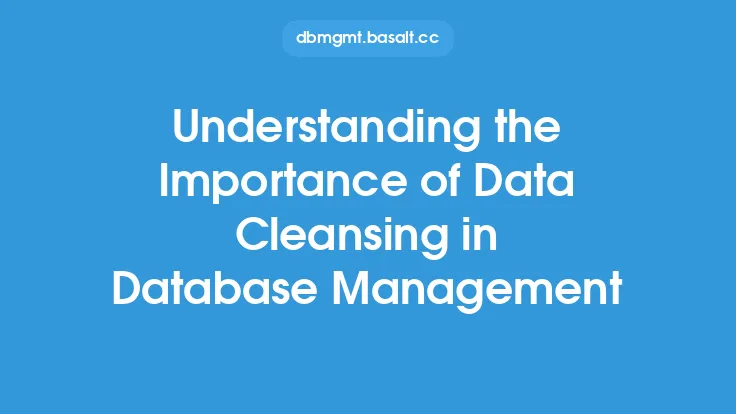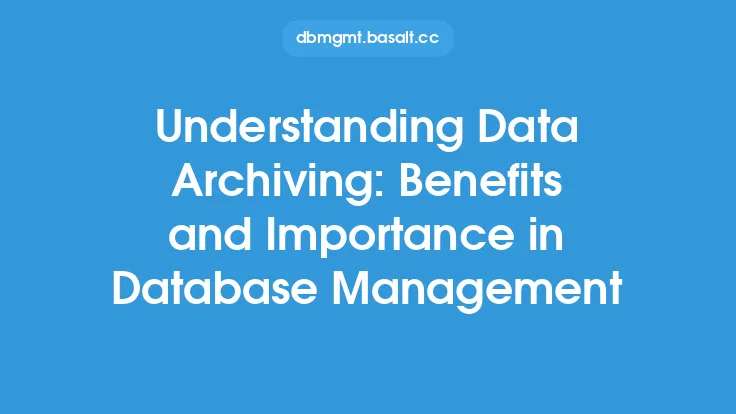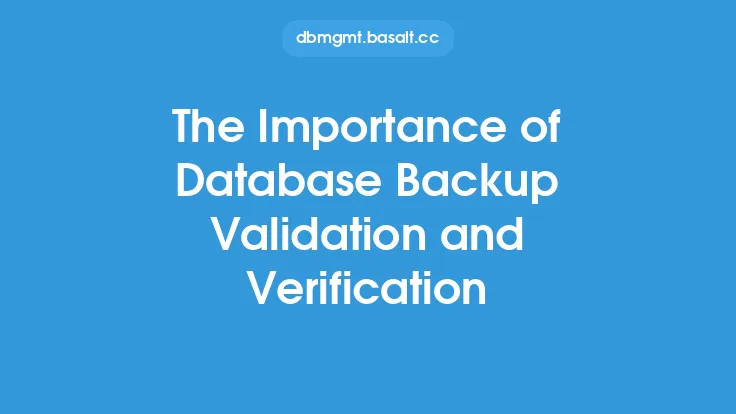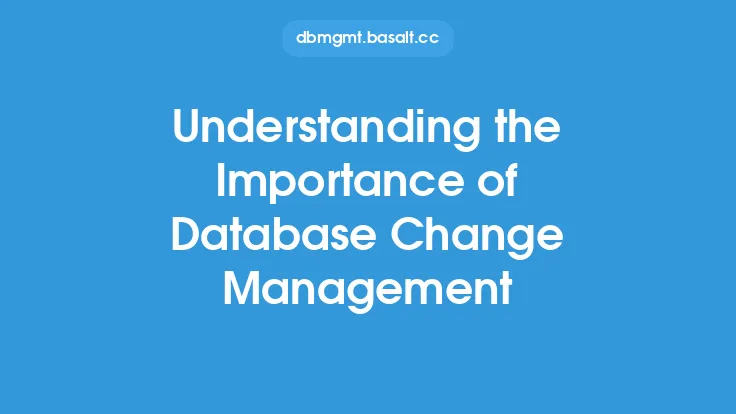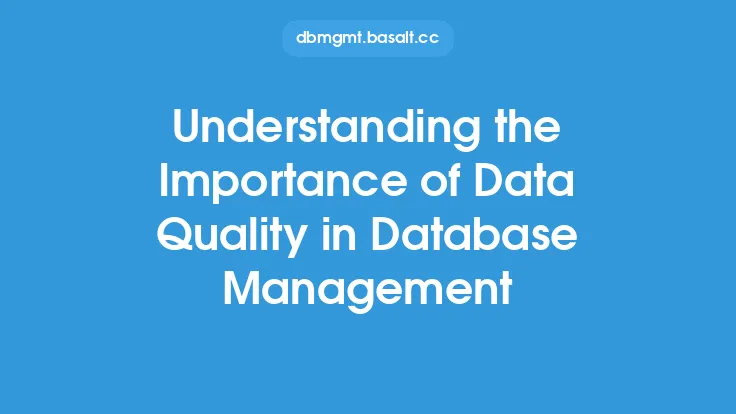Database standards are a set of guidelines and rules that govern the design, development, and maintenance of databases. These standards ensure that databases are consistent, reliable, and efficient, and that they meet the needs of the organization. Database standards are essential for any organization that relies on databases to store and manage its data, as they help to ensure that the data is accurate, secure, and accessible.
Introduction to Database Standards
Database standards are typically developed by a committee or organization, such as the American National Standards Institute (ANSI) or the International Organization for Standardization (ISO). These standards are based on industry best practices and are designed to be flexible and adaptable to different types of databases and organizations. Database standards cover a wide range of topics, including data modeling, database design, data integrity, security, and performance. They provide a framework for database administrators to follow, ensuring that databases are designed and maintained in a consistent and efficient manner.
Benefits of Database Standards
The benefits of database standards are numerous. One of the most significant benefits is that they ensure consistency across databases. When databases are designed and maintained according to a set of standards, it is easier to manage and maintain them, as well as to ensure that they are compatible with other systems and applications. Database standards also help to improve data integrity, as they provide guidelines for data validation, data normalization, and data backup and recovery. Additionally, database standards help to improve security, as they provide guidelines for access control, authentication, and encryption. Finally, database standards help to improve performance, as they provide guidelines for database tuning, indexing, and query optimization.
Types of Database Standards
There are several types of database standards, including data modeling standards, database design standards, data integrity standards, security standards, and performance standards. Data modeling standards provide guidelines for creating data models, which are used to design and implement databases. Database design standards provide guidelines for designing databases, including guidelines for table structure, indexing, and relationships. Data integrity standards provide guidelines for ensuring that data is accurate, complete, and consistent. Security standards provide guidelines for protecting databases from unauthorized access, use, disclosure, disruption, modification, or destruction. Performance standards provide guidelines for optimizing database performance, including guidelines for indexing, caching, and query optimization.
Database Standardization Process
The database standardization process involves several steps, including planning, analysis, design, implementation, and maintenance. The planning step involves identifying the need for database standards and defining the scope of the standardization effort. The analysis step involves analyzing the current state of the databases and identifying areas for improvement. The design step involves creating a set of standards and guidelines for database design, development, and maintenance. The implementation step involves implementing the standards and guidelines, including training database administrators and developers. The maintenance step involves regularly reviewing and updating the standards and guidelines to ensure that they remain relevant and effective.
Database Standards and Database Management Systems
Database standards are often specific to a particular database management system (DBMS), such as Oracle, Microsoft SQL Server, or MySQL. Each DBMS has its own set of features, functions, and capabilities, and database standards must be tailored to take advantage of these features. For example, a database standard for Oracle might include guidelines for using Oracle's specific features, such as Oracle's indexing and caching capabilities. Similarly, a database standard for Microsoft SQL Server might include guidelines for using SQL Server's specific features, such as SQL Server's data compression and encryption capabilities.
Challenges of Implementing Database Standards
Implementing database standards can be challenging, as it requires significant time, effort, and resources. One of the biggest challenges is ensuring that all database administrators and developers are aware of and follow the standards. This requires significant training and education, as well as ongoing monitoring and enforcement. Another challenge is ensuring that the standards are flexible and adaptable to changing business needs and technologies. This requires regular review and update of the standards, as well as a willingness to make changes and adjustments as needed. Finally, implementing database standards can be costly, as it may require significant investment in new technologies, tools, and training.
Best Practices for Implementing Database Standards
There are several best practices for implementing database standards, including starting small, being flexible, and providing training and education. Starting small involves implementing standards in a limited scope, such as a single database or application, and then gradually expanding to other areas. Being flexible involves being willing to make changes and adjustments to the standards as needed, and being open to new ideas and approaches. Providing training and education involves ensuring that all database administrators and developers are aware of and understand the standards, and are able to implement them effectively.
Conclusion
In conclusion, database standards are essential for ensuring that databases are consistent, reliable, and efficient. They provide a framework for database administrators to follow, ensuring that databases are designed and maintained in a consistent and efficient manner. Database standards cover a wide range of topics, including data modeling, database design, data integrity, security, and performance. Implementing database standards can be challenging, but there are several best practices that can help, including starting small, being flexible, and providing training and education. By following these best practices and implementing database standards, organizations can ensure that their databases are accurate, secure, and accessible, and that they meet the needs of the organization.
